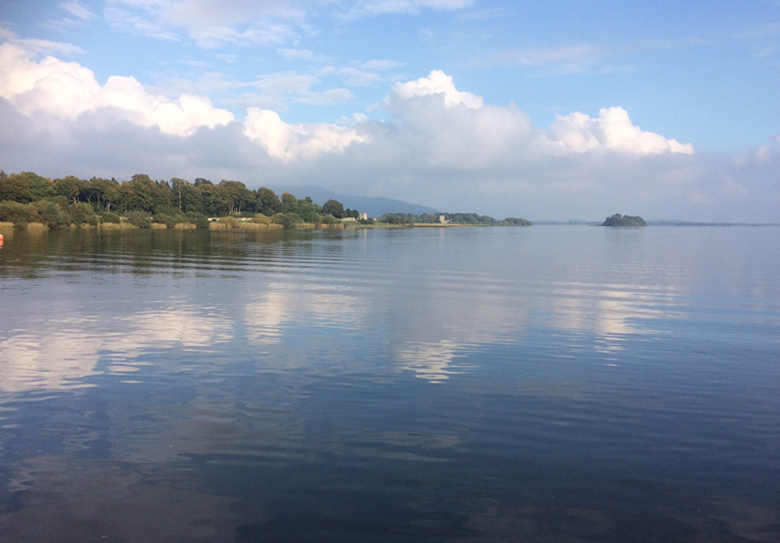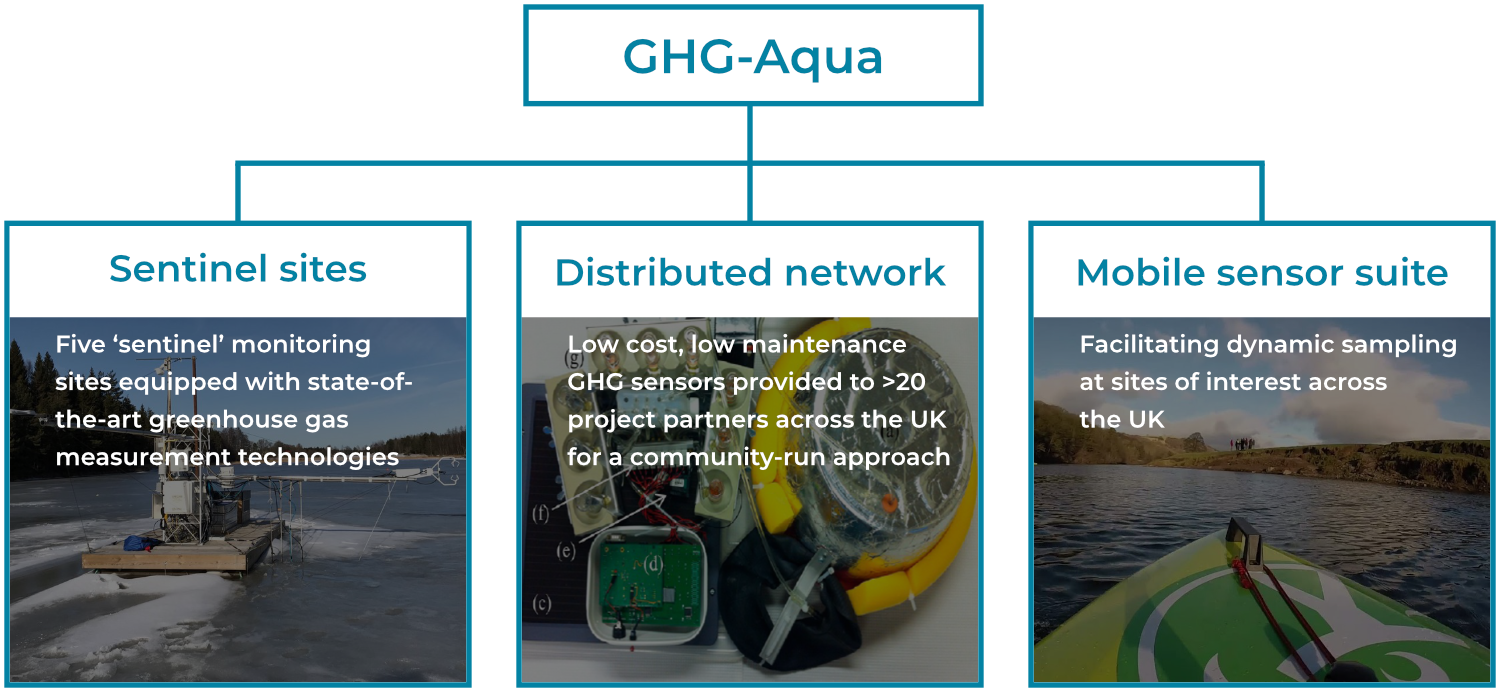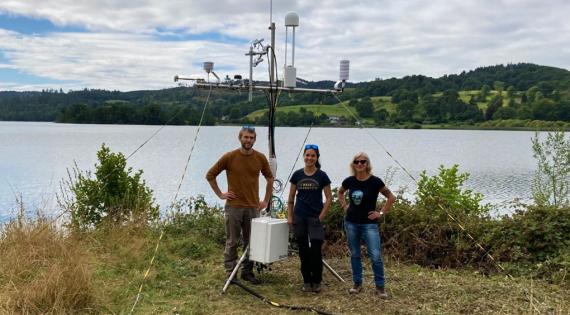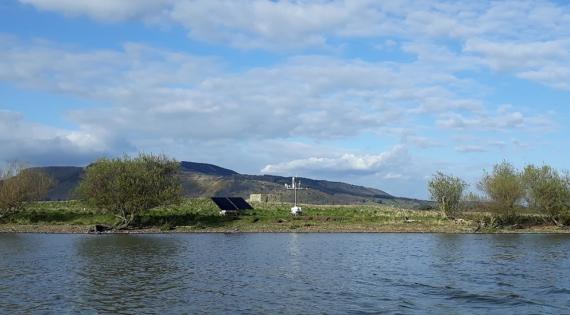The UK Centre for Ecology & Hydrology and our associated research community will use £1 million NERC capital investment to purchase and deploy state-of-the-art aquatic greenhouse gas (GHG) measurement technology. This will allow us to transform our capacity to measure, understand and mitigate greenhouse gas emissions from UK inland waters.
GHG Aqua's scientific objectives are to:
- Establish a research community of research centres and universities, together with industry partners, to undertake coordinated measurements of aquatic GHG fluxes at representative locations across the UK, in order to;
- Expand existing research and build new collaborations to exploit the infrastructure established, and thereby;
- Generate new scientific understanding of the role of inland waters in the global carbon cycle, their contribution to GHG emissions, and the potential to mitigate these emissions through catchment or waterbody-scale interventions.





